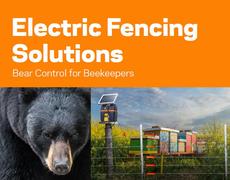|
|
|
Situated off the southern coast of India, Sri Lanka is home to an estimated 4000-5000 elephants- one of the densest elephant populations in Asia. Revered as a national treasure and a symbol of pride, Sri Lankan elephants are a protected species under the nation’s Wildlife Conservation Act. But in the 1980’s the development of new agricultural land surrounding Sri Lanka’s Mahaweli River (335km) brought humans and elephants into conflict. Traditional elephant migratory paths were blocked by this development, and elephants started encroaching upon farmland. To solve this problem faced by farmers and elephants alike, the Mahaweli Authority of Sri Lanka - the institution responsible for the development of the river basin - needed to ensure that man and elephant could co-exist peacefully. When the authority was looking for a solution in the late 1980’s, Sri Lankan technology company Sunpower Systems (Pvt) Ltd introduced the concept of non-lethal high-voltage electric fencing. The company initially designed, supplied and installed two sections of 30km fence, which were powered by Gallagher Energizers, for the Mahaweli Authority. Once implemented, the responsibility for maintenance and set-up of these fences was handed over to the Department of Wildlife Conservation (DWC), which is entrusted with the task of minimising the human elephant conflict. The concept proved a huge success and today there is an estimated 3000km of elephant fencing throughout the region. Building a fence to control an animal that typically weighs around 2500kg is no easy task. Especially when the fence has to be built through difficult jungle terrain in hot and humid conditions. Ravi Weerasekera, managing director of Sunpower Systems, says the fences are mostly installed in linear sections, each up to 20km in length. Standing up to 1.82metres high, fences typically consist of three wires, two of which are live. When an elephant touches the fence they get a short, sharp shock and this deters them from pushing against the fence again. Ravi says elephants are highly intelligent animals that learn from observation. They approach the fences with caution. At some wildlife parks, for example, people will try to feed the elephants from behind the fencing and “a whole herd of elephants” will be lined up along the fence at a measured distance, waiting for food to come through. “It’s quite a dangerous situation and feeding the elephants is certainly not encouraged, but it does show the respect elephants have for these fences.” He says the fences are powered by Gallagher Energizers which are sited in control rooms in the middle of each 20km section. Local villagers are trained to maintain the fences and this includes keeping the fences clear of vegetation. They also learn how to use the solar-powered equipment and perform voltage checks. In the early stages of fence development the fences were powered by B1200 Gallagher Energizers, “which performed very well in tough conditions”, but in recent years these have been replaced by MBX 2500 and MBX 1500 Energizers. These Energizers monitor the fence status and correct any fluctuations automatically. They also generate an alarm when manual intervention is necessary. Ravi says the Energizers are very popular with the people who look after the fences. “They make fence maintenance easier due to the amount of fence performance information available on the Energizer itself. They are also very reliable.” He says Gallagher Energizers are spread throughout the region. Ravi says Gallagher electric fencing products are used widely throughout Sri Lanka in pastoral farming and security applications. Many pastoral farms in Sri Lanka also require perimeter fencing to keep predatory pests like leopards and wild boar away from livestock. The newly built international airport in the southern region of Sri Lanka also has a Gallagher electric fence to prevent elephants from wandering onto the runway. |
December 02, 2013





